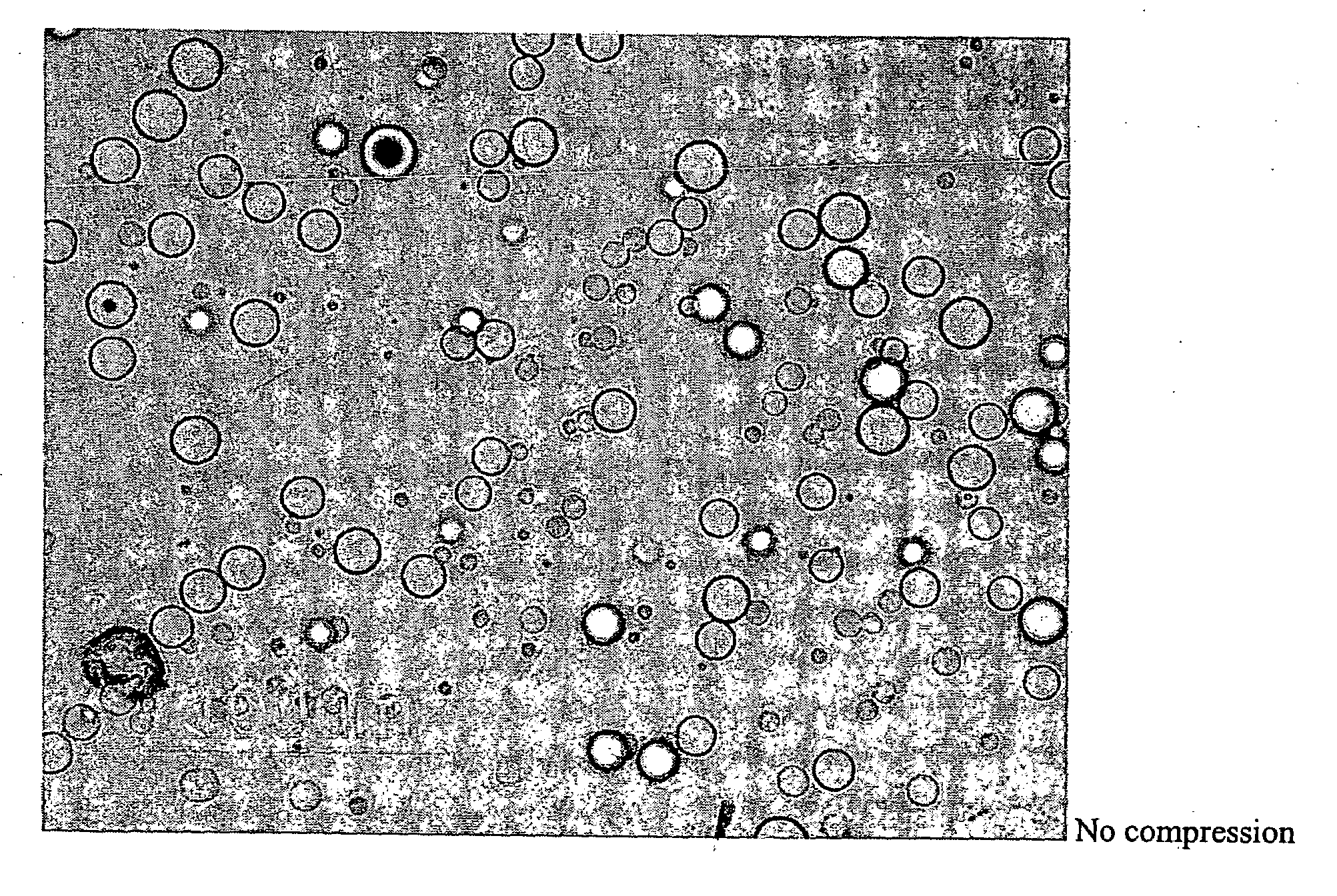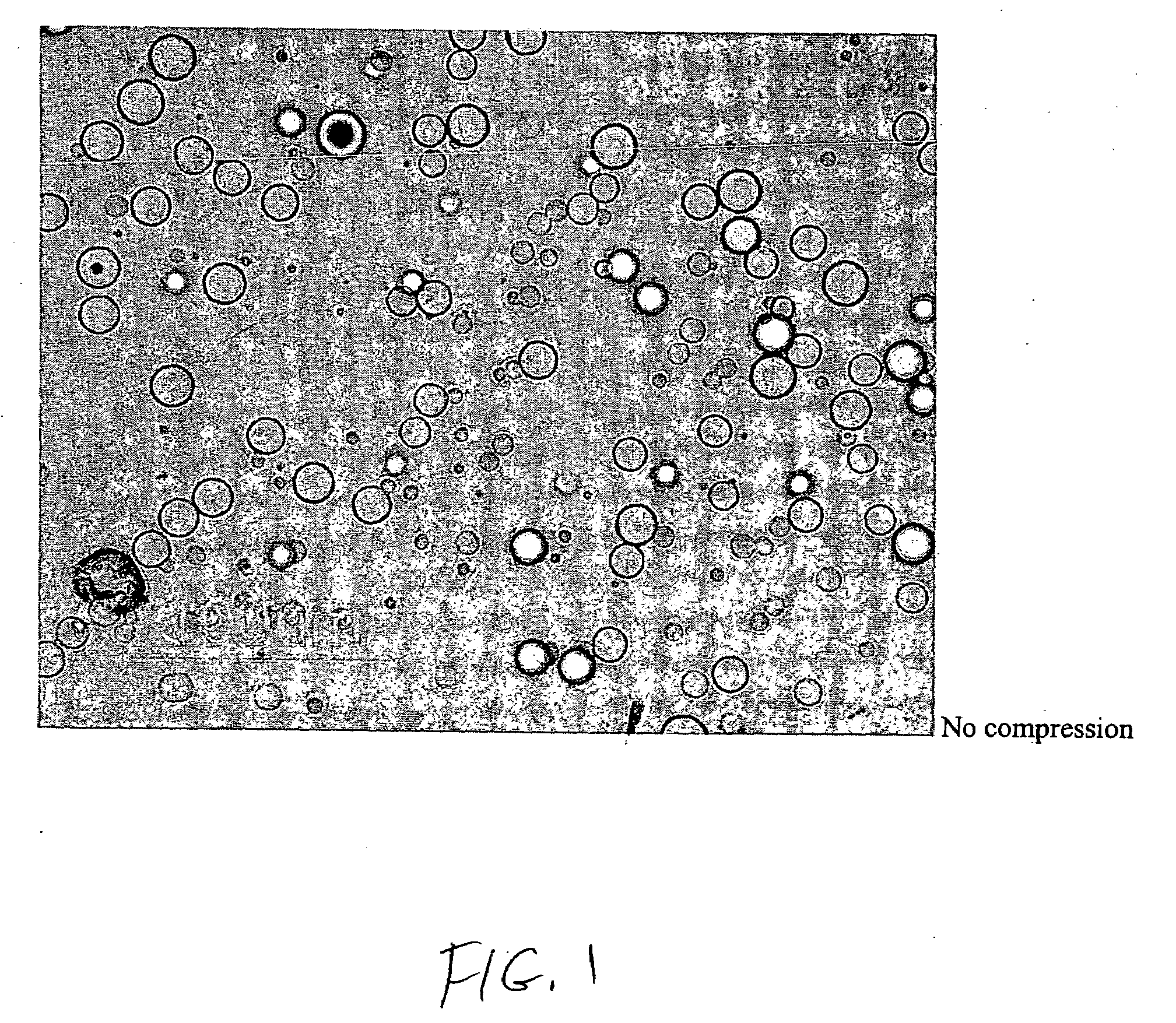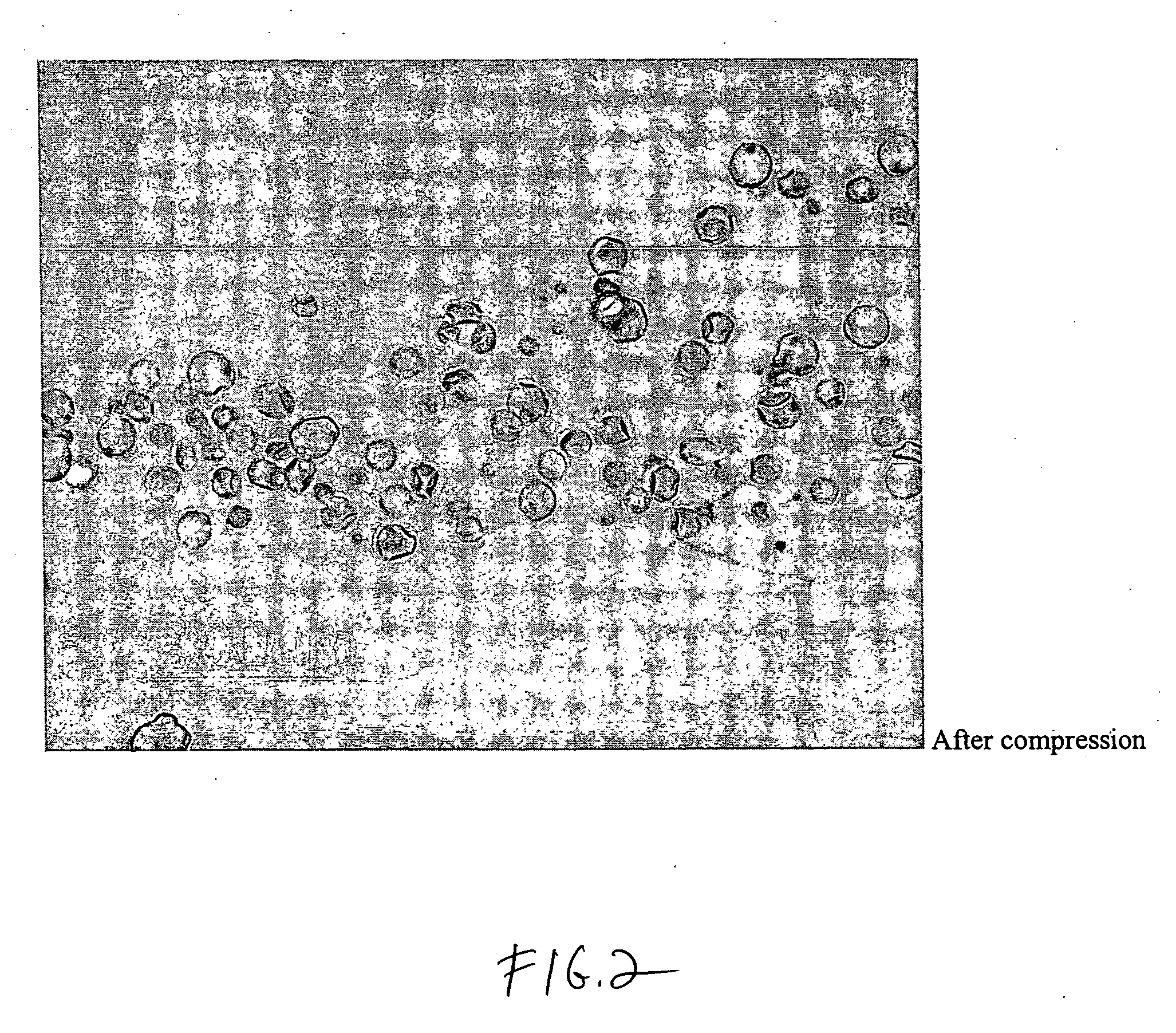Hypercompressed polymer particles for controlled release ophthalmic medications
a technology of hypercompressed polymer particles and ophthalmic medications, which is applied in the direction of prosthesis, drug composition, microcapsules, etc., to achieve the effect of avoiding active patient involvemen
- Summary
- Abstract
- Description
- Claims
- Application Information
AI Technical Summary
Benefits of technology
Problems solved by technology
Method used
Image
Examples
example 1
[0054]A dosage formulation of dexamethasone, as a hypercompressed microcapsule formulation, is prepared by dispersing 325 mg of dexamethasone in 5 g of a poly(dl-lactide) polymer (PLA, intrinsic viscosity 0.66-0.80 dl / g as measured in a Ubbelohde viscometer by assessing the flow time of polymer solutions) PLA is dissolved in 125 ml of chloroform and 3.5 ml of ethanol. The suspension is agitated between 1500 to 2000 RPM with 700 ml of a 2% polyvinyl alcohol (30K to 70K MW) maintained at 4° C. After 6 hours of stirring, the agitating speed is reduced to 700 RPM and chloroform is allowed to evaporate over night. The microspheres formed are recovered by centrifugation at 1500 RPM, washed 3 times with water and lyophilized. The microspheres form a free flowing powder having 6.5 wt % of dexamethasone with the microspheres having a general diameter in the range of 5 to 25 microns. Thereafter, 250 mg of the microspheres are placed in 7 mm diameter stainless steel mold (used for conventional...
example 2
[0055]Discs measuring 7 mm in diameter, with a thickness of 1 mm, a weight of 60 mg, and a drug loading of 6.5%, are made with 50K psi using dexamethasone and the polymer system described above. These discs are placed beneath the conjunctiva in the super temporal quadrant of the eyes of five pigs. The level of dexamethasone in the aqueous humor and the vitreous humor is determined at 0.25 day, 1 day, 3 days, 7 days and 14 days by sampling and analyzing the vitreous humor and the aqueous humor. The concentrations of dexamethasone are reported in FIG. 3. The release profile shown in FIG. 3 shows that the 50K psi disc provided sustained release of dexamethasone for the entire 14 days of the study. Tests of plasma found no detectable dexamethasone which confirmed that the controlled release dosage form has no systemic effect.
PUM
| Property | Measurement | Unit |
|---|---|---|
| thickness | aaaaa | aaaaa |
| thickness | aaaaa | aaaaa |
| diameter | aaaaa | aaaaa |
Abstract
Description
Claims
Application Information
 Login to View More
Login to View More - R&D
- Intellectual Property
- Life Sciences
- Materials
- Tech Scout
- Unparalleled Data Quality
- Higher Quality Content
- 60% Fewer Hallucinations
Browse by: Latest US Patents, China's latest patents, Technical Efficacy Thesaurus, Application Domain, Technology Topic, Popular Technical Reports.
© 2025 PatSnap. All rights reserved.Legal|Privacy policy|Modern Slavery Act Transparency Statement|Sitemap|About US| Contact US: help@patsnap.com



